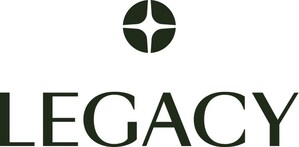Decrease in Smoking in Movies Varies by Studio
WASHINGTON, July 14, 2011 /PRNewswire-USNewswire/ -- With the summer movie blockbuster season in full swing, a new report published today by the U.S. Centers for Disease Control and Prevention (CDC) addresses the public health problem of smoking in youth-rated movies. New data in the Morbidity and Mortality Weekly Report (MMWR) reveals substantial drops in on-screen smoking in top-grossing youth-rated films. The progress was, however, inconsistent across the motion picture industry, varying from studio to studio. By 2010, the three major studios with published policies on smoking in youth-rated films reduced depictions by 96 percent since 2005 compared to just 42 percent in the rest of the industry.
(Logo: http://photos.prnewswire.com/prnh/20101101/DC86294LOGO)
Despite this progress, due to their wide reach, youth-rated movies still accounted for more than 40 percent of the smoking impressions delivered to U.S. theatre audiences in 2010, down from nearly 55 percent in 2005.
In 2010, the U.S. Department of Health and Human Services' strategic plan to reduce tobacco use included reducing youth exposure to on-screen smoking. Nearly 80 percent of all adult smokers begin before the age of 18 and research concludes that on-screen smoking is a major factor in youth smoking uptake. The World Health Organization and numerous public health and health professional organizations have recommended several policies that would be effective in reducing harm from on-screen tobacco exposure, including assigning an R-rating for new movies that portray tobacco imagery so that studios would leave smoking and other tobacco use out of films designed to be marketed to youth.
"Each day in the United States, about 3,400 young people between the ages of 12 and 17 smoke their first cigarette, and an estimated 850 youth become daily cigarette smokers," said Ursula Bauer, Ph.D., M.P.H., director of CDC's National Center for Chronic Disease Prevention and Health Promotion. "Completely eliminating smoking from new youth-rated movies could help prevent America's young people from starting down the road of tobacco addiction, disease, and premature death."
Today's report emphasizes that point, concluding that, "Although three major motion picture companies have excluded nearly all tobacco incidents from their top-grossing youth-rated movies, inconsistent performance among motion picture companies threatens continuing progress. Consistent with the effects of anti-tobacco use policies adopted by the three motion picture companies, expanding the R-rating to include movies with smoking could further reduce exposures of young persons to on-screen tobacco incidents, making smoking initiation less likely."
"Comcast/Universal, Disney, and Time Warner/Warner Bros. are to be commended for responding to this problem responsibly and nearly eliminating tobacco from their G, PG and PG-13 movies," said Stanton Glantz, Ph.D., Professor of Medicine at University of California, San Francisco and Director of the Smoke Free Movies Project, another author of the study. "Without a uniform R-rating for smoking, it will be difficult to make further progress to finally end smoking depictions in films rated for youth that entice them to begin deadly life-long addictions."
"This report reminds us that while we have made progress to reduce tobacco incidents in youth-rated films, youth are still exposed to billions of tobacco impressions every year. In 2007, the MPAA indicated it would consider smoking when rating films, and now would be the perfect time to act. Youth-rated films (mostly PG-13) still accounted for an astonishing 54 percent of top-grossing movies with on-screen smoking from 2005-2010, so an industry-wide R-rating policy addressing this issue has enormous potential to save lives," said Cheryl G. Healton, DrPH, President and CEO of Legacy, the public health foundation that co-funded the research.
The report in today's MMWR highlights the fact that in 2010, 15 states spent $288 million subsidizing top-grossing films with smoking in them. That is more than they budgeted for their tobacco control programs in 2011 ($280 million). The report suggests that these subsidy programs be harmonized with state health policies by making future film projects with tobacco content ineligible for tax payer support.
Thumbs Up! Thumbs Down!, a project of Breathe California of Sacramento-Emigrant Trails, collected the data for the report.
The National Cancer Institute, the Institute of Medicine and other authorities, state that there is a causal relationship between smoking in the movies and youth uptake of smoking. Smoking in films has also been a major public health priority for organizations like the American Academy of Pediatrics, the American Medical Association, the World Health Organization, American Heart Association, American Lung Association, American Public Health Association, Legacy and more. The groups are urging film studios to endorse four policy solutions developed by the national Smoke-Free Movies campaign:
- Rating "R" any new movie with smoking, with the exception of movies that depict the health consequences of smoking or actual historic figures who actually smoked;
- Inserting strong, evidence-based anti-smoking public service announcements (PSAs) before movies with smoking, in all distribution and exhibition channels;
- Requiring producers to certify that no consideration of any kind was received for tobacco depictions in a film; and
- Ending the depiction of tobacco brands on screen.
"Smoking in Top-Grossing Movies – United States, 2010" reports that:
- Tobacco incidences in top-grossing youth-rated films declined by 66 percent since 2005.
- Three major movie studios have almost eliminated tobacco from their youth-rated movies, reducing the number of tobacco incidents per film (G/PG/PG-13) by 96 percent.
- In contrast, studios without policies as well as independent companies reduced tobacco depictions in youth-rated movies by an average of only 42 percent over the same period.
The data find that three major movie studios (Comcast/Universal, Disney and Time Warner/Warner Bros.) have almost eliminated tobacco from their youth-rated movies, reducing the number of tobacco incidents per film (G/PG/PG-13) by 96 percent. In contrast, studios without policies as well as independent companies (News Corporation/Twentieth Century Fox, Sony/Columbia/Screen Gems and Viacom/Paramount) reduced tobacco depictions in youth-rated movies by an average of only 42 percent over the same period.
SOURCE Legacy
WANT YOUR COMPANY'S NEWS FEATURED ON PRNEWSWIRE.COM?
Newsrooms &
Influencers
Digital Media
Outlets
Journalists
Opted In





Share this article